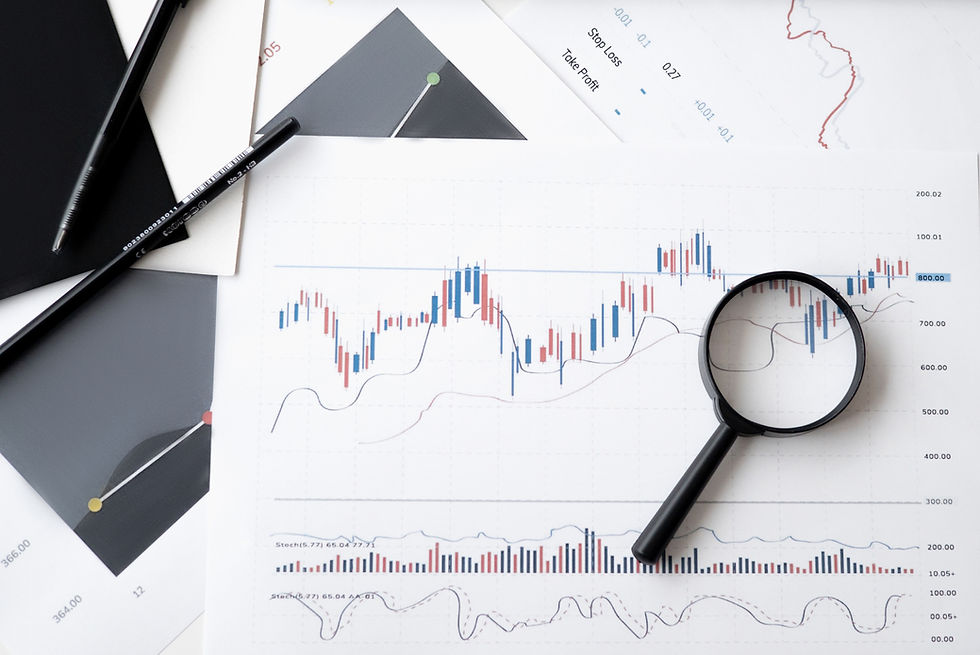How to Invest 10k: Smart Strategies for Every Risk Appetite
- Pascal
- Mar 31
- 4 min read
Investing $10,000 wisely can be a game-changer for your financial future. Whether you're a conservative investor looking for safety or a risk-taker seeking high returns, there's a strategy for you.
In this guide, we’ll explore different investment options based on risk appetite—from low-risk to high-risk strategies—so you can grow your money according to your comfort level.

1. Low-Risk Investments: Stability and Security
If you prefer security over high returns, these options will help protect your capital while providing moderate growth.
A. High-Yield Savings Account (HYSA) or Money Market Account
Risk Level: Very Low
Potential Return: 3-5% annually
Best for: Keeping money liquid and safe
A high-yield savings account (HYSA) or money market account provides safe, easy access to your funds while earning better interest rates than traditional savings accounts.
Options: Ally Bank, Marcus by Goldman Sachs, or your local credit union.
B. Certificates of Deposit (CDs)
Risk Level: Very Low
Potential Return: 4-6% annually
Best for: Investors who can lock in their money for 6 months to 5 years.
A CD allows you to earn a fixed return over time with zero market risk. Just ensure you won’t need the money before the term ends.
Options: Capital One, Discover Bank, CIT Bank
C. Bonds (Government or Corporate)
Risk Level: Low
Potential Return: 4-7% annually
Best for: Long-term, predictable income.
Government bonds like U.S. Treasury Bonds or municipal bonds are safe options. Corporate bonds offer higher yields but carry slightly more risk.
Options: U.S. Treasury Bonds (via TreasuryDirect), Bond ETFs like BND (Vanguard Total Bond Market ETF)
2. Medium-Risk Investments: Growth with Some Safety
If you're comfortable with moderate risk and want better returns, these strategies balance growth and security.
A. Index Funds & ETFs (Exchange-Traded Funds)
Risk Level: Medium
Potential Return: 8-12% annually
Best for: Long-term passive investing.
Index funds track the market, giving you diversified exposure with low fees.
Best Index Funds & ETFs:
S&P 500 Index Fund (VFIAX, VOO) – Invests in top 500 U.S. companies
Total Stock Market ETF (VTI) – Covers the entire U.S. stock market
Dividend ETFs (SCHD, VYM) – Focuses on companies paying high dividends
Example: If you invested $10,000 in the S&P 500 10 years ago, you’d have around $32,000 today!
B. Real Estate Crowdfunding
Risk Level: Medium
Potential Return: 6-12% annually
Best for: Investors who want real estate exposure without buying a property.
Platforms like Fundrise and Roofstock allow you to invest in real estate projects with just $500-$1,000.
Options: Fundrise, RealtyMogul, Roofstock
C. REITs (Real Estate Investment Trusts)
Risk Level: Medium
Potential Return: 5-10% annually
Best for: Passive income through real estate investments.
A REIT is a company that owns and manages income-generating properties like apartments, malls, and offices.
REIT ETF Examples: VNQ (Vanguard Real Estate ETF), SCHH (Schwab U.S. REIT ETF)
3. High-Risk Investments: Big Rewards, Bigger Volatility
If you’re open to higher risks for potentially higher returns, these investments might be for you.
A. Individual Stocks
Risk Level: High
Potential Return: 10-50% annually (or more)
Best for: Investors willing to research stocks and tolerate volatility.
If you choose high-growth stocks, your $10,000 could double or triple over time.
Popular growth stocks:
Tech: Apple (AAPL), Microsoft (MSFT), Tesla (TSLA)
AI & Cloud: NVIDIA (NVDA), Amazon (AMZN)
Dividend Stocks: Johnson & Johnson (JNJ), Procter & Gamble (PG)
Tip: Don’t put all $10,000 into one stock—diversify your portfolio.
B. Cryptocurrencies (Bitcoin, Ethereum, etc.)
Risk Level: Very High
Potential Return: 20-100% annually (or more)
Best for: Investors who believe in blockchain and digital assets.
Crypto is highly volatile, but some investors have made huge gains.
Suggested Allocation:
50% Bitcoin (BTC) – Most stable
30% Ethereum (ETH) – Growth potential
20% Altcoins (SOL, ADA, MATIC, etc.) – High-risk, high-reward
Best platforms: Coinbase, Binance, Bitpanda
C. Startups & Angel Investing
Risk Level: Extremely High
Potential Return: 1000%+ (if successful)
Best for: Risk-tolerant investors looking for huge returns.
Angel investing allows you to invest in early-stage startups, potentially earning 10x or more.
Platforms: AngelList, SeedInvest
4. How to Build a Smart $10,000 Investment Strategy
A. Choose Based on Your Risk Tolerance
Low Risk: HYSA, CDs, Bonds
Medium Risk: Index Funds, ETFs, REITs
High Risk: Stocks, Crypto, Startups
B. Diversify Your Investments
Example of a balanced portfolio to invest 10k:
40% Index Funds & ETFs ($4,000)
20% Real Estate (REITs or Crowdfunding) ($2,000)
20% Individual Stocks ($2,000)
10% Crypto ($1,000)
10% High-Yield Savings ($1,000)
C. Reinvest and Stay Patient
The best investors stay in the market for the long term. Let compound interest grow your wealth over time.
Final Thoughts: Where Will You Invest 10k?
Whether you're looking for safe, long-term growth or high-risk, high-reward investments, there’s a strategy that fits your financial goals.
Want stability? Stick to HYSAs, Bonds, and Index Funds.
Looking for moderate growth? Try Real Estate and ETFs.
Ready to take higher risks? Invest in stocks, crypto, or startups.
Start with what feels right for you, diversify wisely, and let your money work for you!



Comments